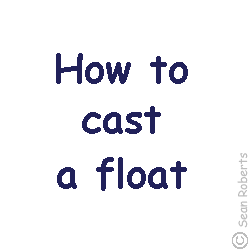🪶 The Waggler
Introduction
Without doubt, the waggler is one of the most used floats in my tackle box — and the method that has probably accounted for more of my catches in a single season than any other.
Although the waggler may feel like a modern tool, it’s actually a relatively late arrival in angling history. It wasn’t truly recognised as a deadly and consistent method until the early 1950s, but its roots stretch back much further.
🕰️ A Short History of the Waggler
Exactly who first developed the waggler is a subject of debate among angling historians. Early records suggest a waggler-style antenna float was already being used on the great canals of Holland before 1900.
Many legendary names have been connected with its modern evolution — Benny Ashurst, Billy Lane, Johnny Moult, and John Toulson, to name just a few. The “grandfather of match fishing,” J.H.R. Bazley, even won two National Championships (1909 and 1927) using bottom-only floats.
Originally, the waggler was known as the “waddled float.” The name came from the way the float “waddled” through the water when retrieved.
Peacock quills only arrived in the UK shortly after the Second World War. Before that, wagglers were made from a variety of materials: swan quill, goose quill, porcupine, condor quill, crow quill, and even early celluloid — which can be seen as the forerunner of modern plastic floats.
🧪 Modern Waggler Construction
Today, wagglers are produced with high-tech precision, using:
-
Clear plastics
-
Graded peacock quill
-
Sarcandas reed
-
Nylon
-
Tapered balsa
-
Or combinations of these materials
They’re finished with varnish or airship polythene paint, often with interchangeable tips, adaptors, and printed shot capacities for convenience.
At Gold Medal Floats, most of the wagglers I produce come fitted with silicone adaptors, which I prefer for ease of attachment. The float is secured to the main line with split shot either side, providing both weight and balance. Additional shots are then placed down the line toward the hook length, spaced to avoid tangling during casting — this is where good presentation begins.
🧭 Choosing the Right Waggler
Picking the right size waggler for a venue is a skill learned through experience.
A good rule of thumb is:
-
Don’t use a float bigger than you need.
-
Choose a size light enough to cast accurately into your swim.
One of the waggler’s greatest advantages is its versatility:
-
It can be used on most venues.
-
The locking system allows easy adjustment of depth.
-
It casts smoothly and combats windy conditions better than most other floats.
🪝 Casting Techniques
Overhead Cast (Recommended)
-
Wind the float halfway up the rod.
-
Sight an object on the far bank or skyline.
-
Bring the rod back at a 45° angle.
-
Cast forward, releasing the line as the float travels.
-
As the float begins to descend, feather the line with your index finger to straighten the shot and avoid tangles.
To sink the line, simply dip the rod tip into the water after the cast and retrieve a few feet.
Side Cast (Advanced)
With practice, you can cast from the side:
-
Hold the rod at waist height, gripping the line above the bait.
-
Load the rod like a catapult.
-
Release smoothly for an accurate, low cast.
Side casting is ideal in tight swims or where overhead casting isn’t practical.
🏆 Why the Waggler Endures
Decades after its rise to popularity, the waggler remains a match-winner. Its adaptability, casting ease, and presentation control make it a vital tool for any serious coarse angler. Whether on a stillwater or river, in calm or windy conditions, a well-set waggler can give you the edge that wins matches.


If you want to sink the line, just place the end of the rod into the water and retrieve a few feet. Casting the waggler from the side is a bit more complicated; it can be done with a bit of practice, simply hold the rod from your waist, holding on to the line above the bait, making the rod bend for a catapult action.
List of Wagglers: Click on the link below
PEACOCK STRAIGHT
PEACOCK INSERTED
PEACOCK STEPPED
BODY WAGGLER
THAI WAGGLER
LOADED WAGGLER
STILLWATER BLUE WAGGLER
HINGED WAGGLER
MISSILE WAGGLER
DART WAGGLER
MAGGOT FEEDERFLOAT
GROUNDBAIT FEEDERFLOAT
CLEAR CRYSTAL WAGGLER
BALSA WAGGLER
PASTE WAGGLER
DUCKER WAGGLER
ONION WAGGLER
CROWQUILL WAGGLER
SLIDING WAGGLER
TROTTER WAGGLER
Now Available: The Complete Float Manual. Over 169 pages of content on Amazon
Click on the link below

📘 Download the Complete Float Manual – Instant Access
Bring decades of float-fishing knowledge straight to your screen.
Written by World Champion Clive Branson, The Complete Float Manual is a 167+ page eBook packed with practical techniques, classic float designs, diagrams, and championship-winning methods.
✅ Learn how to use wagglers, stick floats, pole floats and more
✅ Discover the history and evolution of float fishing
✅ Get pro tips and tactics used at the highest level
✅ Ideal for beginners and experienced match anglers alike
💻 Instant Download (PDF) — no waiting, no shipping
💳 Secure checkout with PayPal
👉 Order now and start reading within minutes.